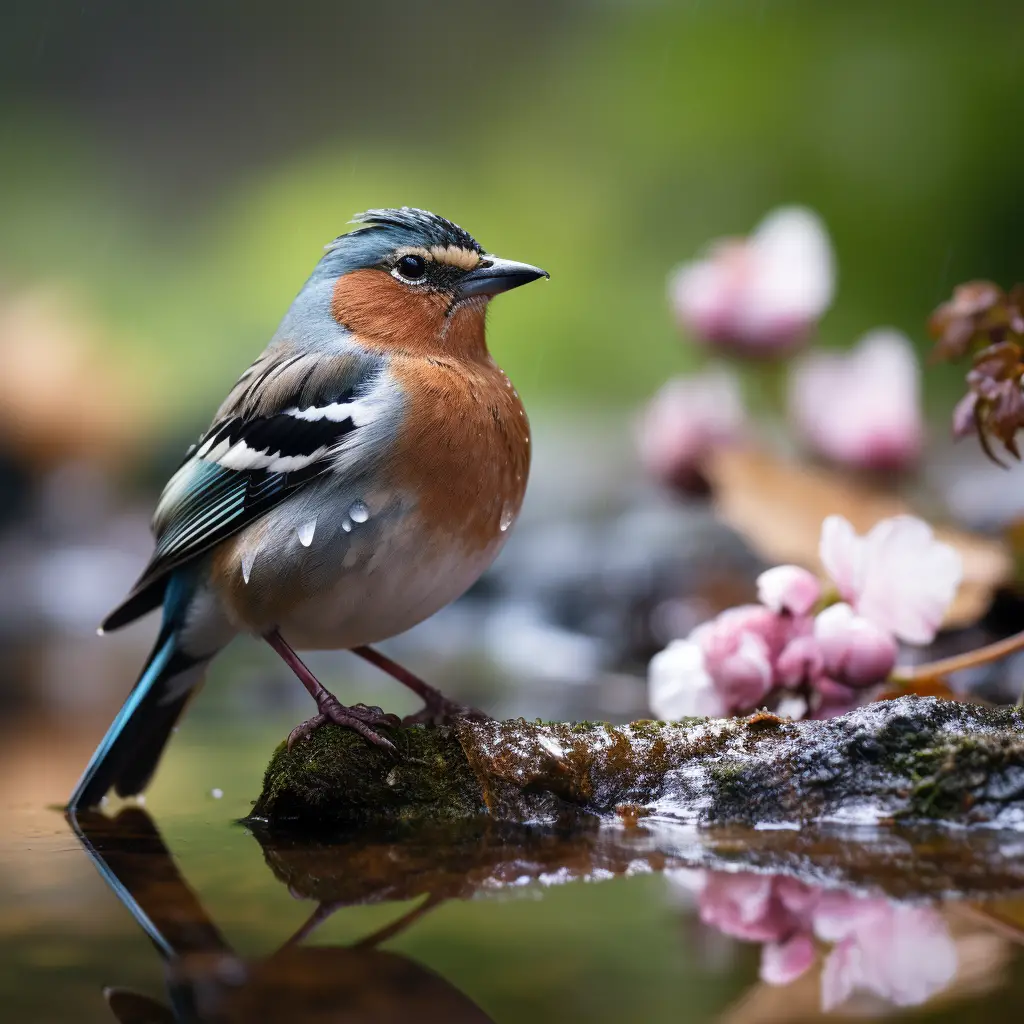
If you’ve ever heard the sound of crickets chirping in your roof, you know just how annoying and frustrating it can be. In this article, we’ll discuss what causes crickets to invade your home and provide step-by-step instructions on how to prevent them and remove them if they’ve already taken up residence.
Why Crickets Attack Your Home
If you’ve ever had the displeasure of dealing with a House cricket infestation, you know these tiny pests can cause big problems. Not only are they noisy, but they can also damage your clothes and furniture. But have you ever wondered why crickets are drawn to your home in the first place? Read on to find out.
There are two main reasons why crickets end up in your home: food and shelter. Crickets are omnivorous, which means that they’ll eat just about anything. This includes both plant and animal matter. So, if there’s food in your home, chances are the crickets will find it.
As for shelter, crickets need a place to hide from predators and the elements. Your home provides them with the perfect opportunity to do just that. Crickets often take up residence in dark, damp places like basements and crawl spaces. But they’re not picky—if they can find a crack or crevice to squeeze into, they will.
Crickets can be a nuisance, but understanding why they’re attracted to your home is half the battle. By taking steps to eliminate food sources and seal off potential hiding spots, you can help keep these pests at bay. And if all else fails, professional pest control options are always available.
Telltale Signs of A Cricket Infestation?
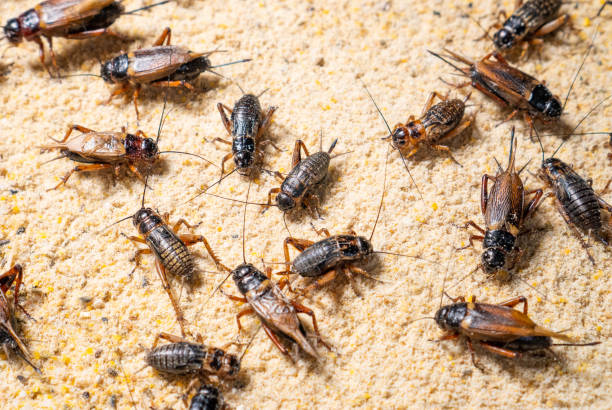
Crickets are one of the most common household pests. They are attracted to homes in search of food and shelter and can be a real nuisance. Here are four signs that you have a cricket infestation:
1. Chirping Noises
One of the most obvious signs of a cricket infestation is the noise they make. Male crickets produce a loud chirping noise by rubbing their wings together. This noise can be quite annoying, especially if you have crickets living inside your walls. If you hear chirping noises coming from your walls or ceilings, there’s a good chance you have a cricket infestation.
2. Damage to Clothing
Crickets can also damage your clothing. They nibble on fabric in order to get the nutrients they need, which can leave behind holes in your clothes. If you notice holes in your clothing or see cricket droppings on your clothes, it’s likely you have an infestation.
3. Droppings
Crickets also leave behind droppings, which look like small, dark pellets. These droppings can be found on floors, countertops, and furniture. If you see these droppings around your home, it’s a good indication that you have an infestation.
4. Dead Crickets
Another sign of a cricket infestation is the presence of dead crickets. Crickets don’t live very long and will eventually die, even if there’s food and water available. If you find dead crickets around your home, it means there are live crickets somewhere nearby.
Suppose you suspect you have a cricket infestation. In that case, it’s essential to take action immediately, as they breed quickly and can cause extensive damage to clothing and other materials in your home. Contact a pest control professional to get rid of the problem before it gets out of hand.
What Do House Crickets Look Like?
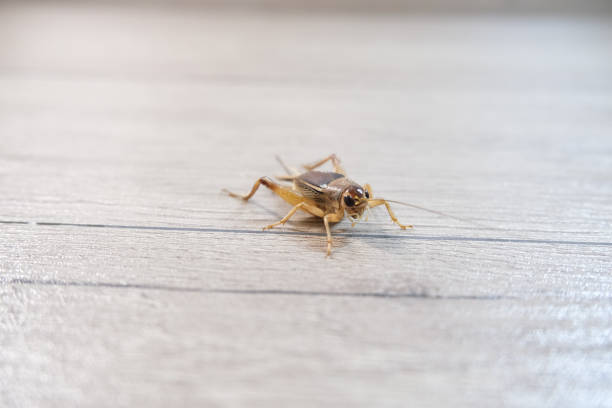
You’re not alone if you’ve ever seen cricket in your house. These insects are attracted to warmth and moisture, making homes and other buildings the perfect place to set up shop. Although they’re generally harmless, many people find crickets creepy-crawly pests that are best avoided. Let’s take a closer look at these often misunderstood creatures.
Appearance
crickets measure about 3/4 of an inch in length and are light yellow or brown. They have three dark stripes running down their backs, long antennae, and large hind legs that they use for jumping.
If you’ve ever heard chirping coming from inside your walls, it was probably a cricket making that noise. Male crickets make this sound by rubbing their wings together; they do it to attract mates and ward off rivals.
crickets may be small insects, but they can actually tell us a lot about our own behavior as human beings. Like us, these creatures are attracted to warmth and shelter; also like us, they will eat just about anything placed in front of them!
Although they’re generally harmless pests, many people choose to get rid of them when they find them in their homes. But now that you know a little bit more about these intriguing insects, maybe you’ll think twice before squishing the next one you see!
What do Crickets Eat?
Have you ever wondered what crickets eat? Do they eat other bugs? Do they eat plants? Do they eat people’s food? The answer is all of the above! Crickets are pretty fascinating creatures with a very diverse diet. Keep reading to learn more about what crickets eat and how they find food.
Crickets are omnivores, which means they eat plants and other animals. In the wild, crickets will eat just about anything they can find, including leaves, fruit, other insects, and even smaller animals like lizards and mice. If it fits in their mouths and they can chew it up, crickets will try it!
Most pet crickets are fed a diet of commercially prepared cricket food. This food is usually a mixture of dried vegetables, fruits, grains, and powdered vitamins and minerals. Some cricket keepers also like to offer their pets live foods like mealworms or flies as a special treat. If you’re unsure what to feed your pet cricket, ask your local pet store for some advice. They will be more than happy to help you out.
Crickets have an excellent way of finding food. They use something called sonar, which is similar to the radar that airplanes use.
Sonar works by sending out sound waves and then listening for the waves to bounce back. By doing this, crickets can figure out where things are located and whether or not there is food nearby. Pretty neat, huh?
Crickets are exciting creatures with a very diverse diet. They will eat plants and other animals – pretty much anything that fits their mouths! Most pet crickets are fed a diet of commercially prepared cricket food, but they will also enjoy live foods like Mealworms or flies as a special treat.
Crickets use something called sonar to find food, which is similar to the radar that airplanes use. By sending out sound waves and then listening for the waves to bounce back, crickets can figure out where things are located and whether or not there is food nearby. Who knew there was so much to learn about these little creatures?
Methods of Eliminating Crickets
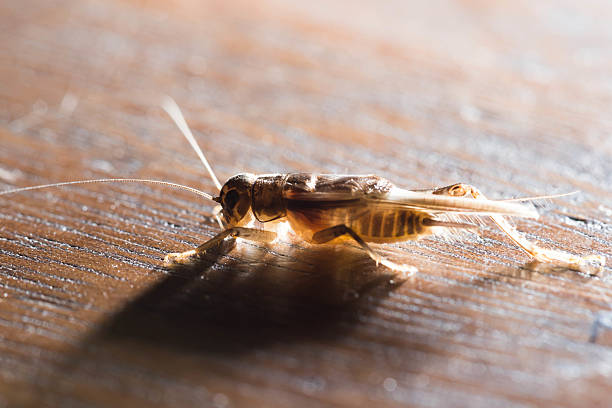
No one likes dealing with pests, especially when they won’t go away no matter what you do. If you’re dealing with a cricket infestation, you may be feeling frustrated and helpless. But don’t worry, we’re here to help! In this blog post, we’ll show you a few methods of eliminating crickets so you can take back your home.
Crickets are more than just a nuisance; they can cause damage to your home and belongings. In addition to eating clothes and furniture, crickets can also chew through electrical wiring, which presents a serious fire hazard. If you suspect you have a cricket infestation, it’s essential to act quickly to get rid of them before they cause any more damage. Here are a few ways to get rid of crickets:
Set up traps:
There are many different types of cricket traps that you can purchase at your local hardware store. The sticky trap is the most common type, which uses adhesive to capture the cricket. Others include pheromone traps, which attract male crickets using a particular lure, and light traps, which use light to attract and kill crickets.
Eliminate their food source:
Crickets are attracted to areas where there is food available. So, one way to eliminate them is to eliminate their food source. This means regularly cleaning up any food scraps or spills in your home and sealing up any cracks or holes where they might be able to get inside.
Use insecticide:
If all else fails, you can always resort to using insecticide. You can find cricket insecticide at most hardware stores. Be sure to follow the instructions on the label carefully so that you don’t end up causing more harm than good.
Dealing with a cricket infestation can be frustrating, but fortunately, there are many effective methods of getting rid of them. So don’t wait until they do serious damage to your home—take action today!
How to Prevent Cricket Attacks
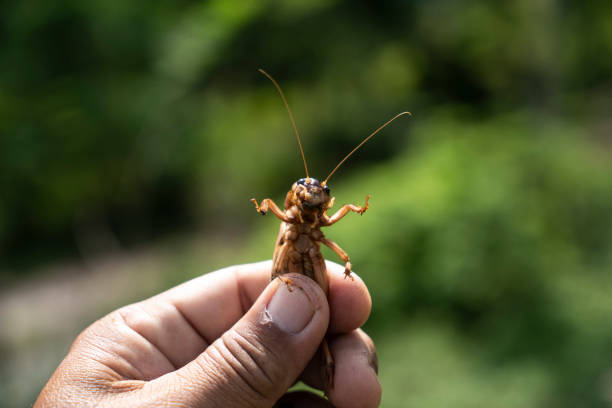
If you’ve ever opened your front door to find a cricket crawling around inside your house, you know how unpleasant it can be. Not only are these insects a nuisance, but they can also be dangerous. That’s why it’s essential to know how to prevent cricket attacks.
Crickets are attracted to warm, moist places, so they’re often drawn to homes in the fall and winter. These insects can enter your home through tiny cracks and crevices.
Once inside, they’ll hide in the dark, secluded areas like closets, basements, and attics. Crickets can also reproduce quickly, so it’s important to take steps to prevent them from getting into your home in the first place.
Here are some tips for keeping crickets out of your home:
– Inspect your home regularly for any cracks or holes that could serve as entry points for crickets. Make sure to seal up any openings that you find.
– Keep your yards and gardens free of debris and overgrown vegetation. This will make it less likely for crickets to take up residence on your property.
– Remove any sources of food or water that might attract crickets to your home. This includes fixing leaks and sealing up food containers.
– Use cricket traps to catch crickets that have already made their way into your home. These traps use pheromones to attract male crickets, who are then caught in a sticky substance.
– Call a professional exterminator if you have a severe cricket problem that you’re unable to resolve on your own.
Crickets may seem harmless, but these insects can be quite dangerous. They can carry diseases, and they can also cause structural damage to your home if left unchecked.
That’s why it’s so important to take steps to prevent cricket attacks. By following the tips outlined above, you can keep these pests out of your home for good!
FAQs About Crickets
Q. What are the most common types of crickets?
A. The most common types of crickets are house crickets, field crickets, and camel crickets. House crickets can be found in homes worldwide, while field crickets live outdoors and prefer grassy areas. Camel crickets are usually found in damp, dark areas, such as basements and crawl spaces.
Q. What do crickets eat?
A. Crickets are omnivores and feed on almost anything containing protein or carbohydrates. They often feed on small insects, plants, and even fabrics like wool or cotton.
Q. Can crickets make noise?
A. Yes, crickets are known for making loud chirping noises at night. The males produce the sound by rubbing their wings together to attract mates.
Q. Are crickets dangerous?
A. While crickets don’t pose a direct threat to humans, they can carry diseases and cause damage to your home if left unchecked. That’s why it’s important to take steps to prevent cricket attacks and get rid of them as soon as possible.








